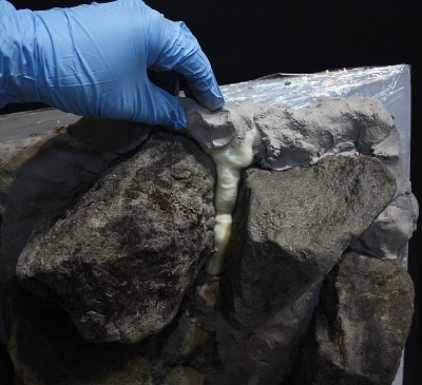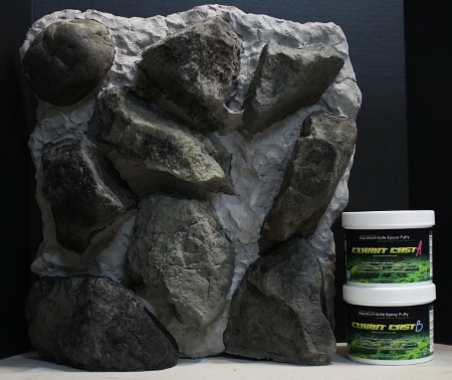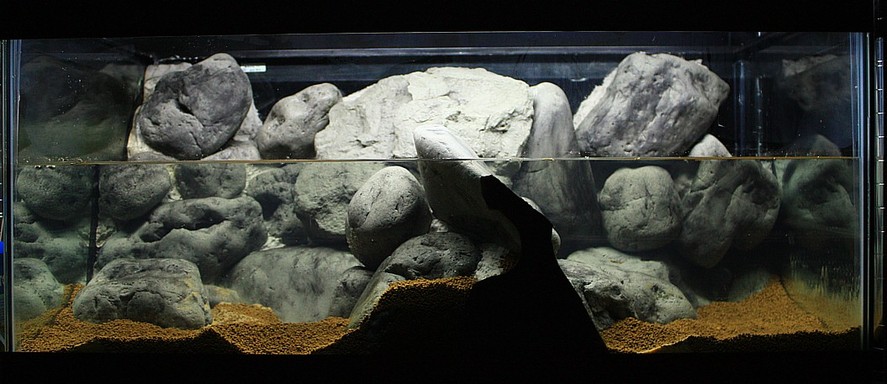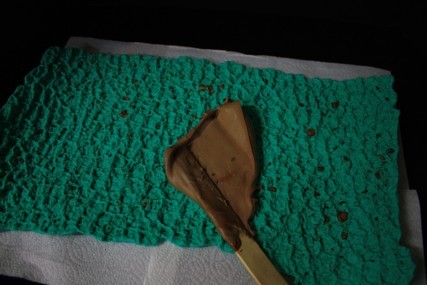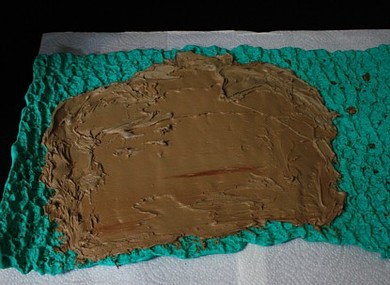


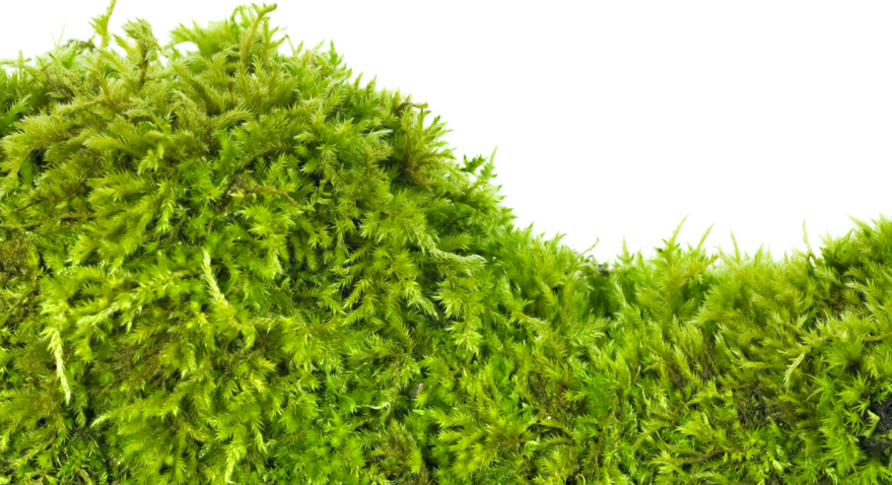

Always wear and use gloves while working with Exhibit Cast and all other epoxy materials! Avoid contact with the skin. Epoxies are capable of causing a skin sensitization reactions in people who have become sensitized to the amine hardener. Typically once sensitization is established in individuals, all subsequent exposures can lead to varying degrees of unpleasant allergic reactions. To avoid becoming sensitized to the Exhibit Cast's hardener, always wear gloves while working with the uncured material and all other uncured epoxy systems.
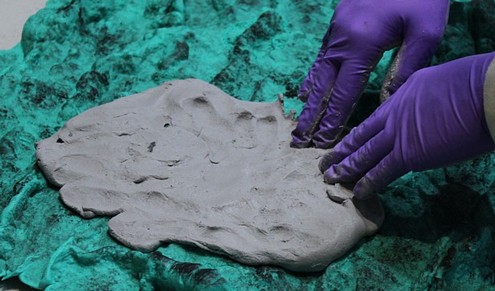
Exhibit Cast Uses
There are hundreds of ways an epoxy putty can be used in various art and home improvement projects but here I want to highlight the main methods this material has been designed for.
1. A lightweight casting medium for use with Exhibit:Mold.
2. A strong matrix to adhere wood, rocks, and other materials into a single solid background.
3. A pH neutral and waterproof foam layup material.
1. A lightweight casting medium for use with Exhibit:Mold.
2. A strong matrix to adhere wood, rocks, and other materials into a single solid background.
3. A pH neutral and waterproof foam layup material.
Use as a casting medium.
Exhibit:Cast was designed to make it as easy as possible to make a realistic background without having to measure and brush in a material. It works much like Play-doh and can be pressed into Exhibit:Mold to make a realistic, strong, and lightweight casting. Additionally you can thin it with water and make a paste to trowel or brush into your mold.
For a step-by-step tutorial on this, click here.
For a step-by-step tutorial on this, click here.
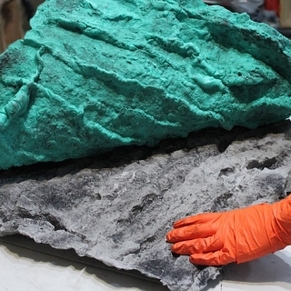
Use as a matrix.
Exhibit:Cast cures to a strong rock hard material but is easy to work with like a clay before setting. This lets you make a very strong and light background that can hold heavy objects. By using the Exhibit:Cast as a glue (or in geological terms a 'matrix') you can bind together real rocks and wood to make a single solid piece. Most people in the vivarium hobby use the canned expanding foam called "Great Stuff" for this purpose but it isn't as strong for this usage as Exhibit:Cast. The GS foam works well, but it can expand to cover areas you hadn't wished covered. The Exhibit:Cast does not expand, bonds chemically to most surfaces, and is an overall much stronger material while very similar in weight. Tutorial coming soon.
Use for foam layup.
The most common vivarium background design method involves using Great Stuff Foam with various materials embedded in it. This works really well but the next issue is what to coat the unsightly GS foam in. Exhibit:Cast bonds well to cured GS foam and make a strong waterproof layup material. Many people have used the silicone sealant and peat or grout to cover the GS foam, but these materials have drawbacks. The silicone and peat method is not waterproof as water running down the background will erode away the peat revealing the bare silicone. The grout is waterproof but it can leach out harmful calcium hydroxide into your water if not cured for over a month. Exhibit:Cast is waterproof and does not erode away like the grout, but is also pH neutral and only requires 24 hours to cure unlike the month plus like grouts/cements need. Once cured you can paint it to a different color, or you can press sand, peat, or other material into it before it cures to give it a different texture/color.
For a step-by-step tutorial on this background build, click here.
For a step-by-step tutorial on this background build, click here.
